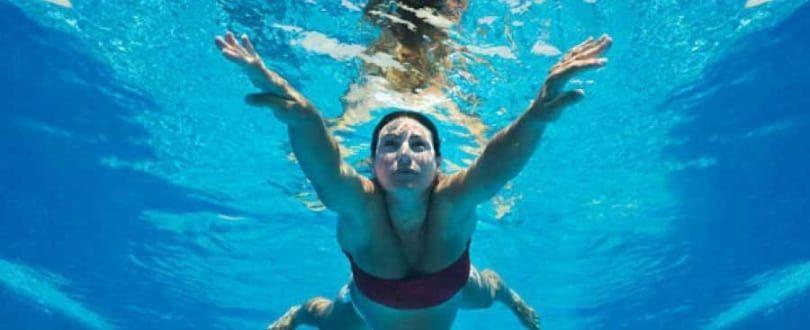
Swimming is one great way to exercise for pregnant women and is generally considered very safe. How safe is swimming? But consult your doctor or midwife before attempting it.
If you swam regularly before pregnancy, you will probably be able to continue. If you haven't been exercising at all you will still be able to swim, you just have to start slowly. Start with some stretches, slow warm-up laps, get into the water gradually and don't overdo it. You will find your rhythm by learning to listen to your body.
How safe is swimming?
The water itself poses no risk to you or your baby • research has shown no health risks to pregnant women from bacteria, chlorine or other chemicals in swimming pools. However, it would be good to avoid the jacuzzi and sauna since, according to various studies, overheating can hinder the development of the fetus.
The benefits of swimming for pregnant women
Swimming is an excellent exercise because it uses both the largest muscle groups (arms & legs). It offers cardiovascular benefits and allows expectant mothers to not feel their weight despite their extra pounds. In addition, as a sport it has a low risk of injury.
Any form of aerobic exercise helps the body process and use oxygen, which is important for you and your baby. Therefore, swimming improves circulation, increases muscle strength and enhances endurance. By swimming in the pool, you burn calories, feel less tired, sleep better, and better handle the physical and emotional fluctuations of pregnancy.
Safety tips
Swimming is one of the safest forms of exercise. If you swam regularly before you got pregnant, you should probably be able to continue without much change. If you haven't been swimming or exercising at all, you should still be able to swim but it's a good idea to check with your doctor or midwife first. You should start slowly, do proper stretching and warm-up with gradual introductions into the water. Don't overdo it.
When you're in the water, it can be easy to forget to stay well hydrated. James M. Pivarnik, PhD at the University of Michigan, says that while there is no official recommendation on how much water pregnant women should drink when exercising, a good guideline is one cup (28.5ml) before they start swimming, a cup for every 20 minutes of exercise and a cup when they get out of the pool. The amount changes when the weather is hot and/or humid.
First Trimester Tips
If you feel strong enough, swim for at least 30 minutes a day. A morning swim can fight nausea and energize you for the rest of the day.
Second Trimester Tips
Pregnancy won't make you cut back on your swimming time as you gain weight because it's an easy form of exercise for moms-to-be. You probably won't need to alter your routine, but a maternity swimsuit may be more comfortable as your belly grows.
Third trimester tips
During exercise, water supports the joints and ligaments avoiding any injuries and also protecting you from overheating. Breaststroke is especially beneficial in the third trimester because it lengthens the pectoral muscles while shortening the back muscles, two areas that traditionally diverge as the body changes due to pregnancy, says Julie Tupler, certified personal trainer and founder of Maternal Fitness , a fitness program for new and expectant moms in New York City. Use an inhaler to relieve the pressure on your throat whenever you rise and fall to catch your breath.
Better moves for pregnant women
The breaststroke is probably your strongest card during pregnancy since it requires zero trunk rotation (as required in the freestyle) and less effort. It also reduces the pull in the waist caused by the increased weight of the abdomen. At the moment when pregnancy "forces" the spine and shoulders to lean forward and the pelvis to deviate from the straight posture, the anterior carefully strengthens the muscles and combats this tendency of the body. Another good movement is the backstroke. Water reduces the effect of gravity on your body, so you can lie back for the backstroke without the risk of increased blood flow that such an exercise might cause outside of water.
Saltamanikas Nikolas
Your AQUA spot program manager
Graduated from the Department of Science of Physical Education & Sports of the National & Kapodistrian University of Athens /Ed. Swimming of all categories
Master, Physical Education (Sport Management) LUC
FOUNDER / www.pool-about.gr / Pool ABOUT SALON - EXPO
nikos.saltamanikas@gmail.com

No Comments